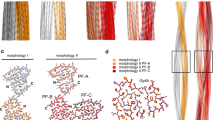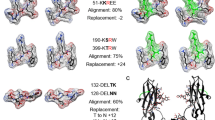Abstract
THE acute-phase reaction in mammals is characterised by an increase in the concentration of certain plasma proteins which starts within hours or days of most forms of acute tissue damage or inflammation, and persists with chronic inflammation and malignant neoplasia1–4. Among acute-phase reactants are protease inhibitors, coagulation factors, complement components and transport proteins as well as proteins without known in vivo roles, such as the classical reactant, C-reactive protein (CRP)1–4. The pathophysiological significance of the acute-phase reaction is not known, but it is a usual accompaniment of tissue damage, and it is of clinical value in the assessment of disease activity4. We now report that in the mouse, serum amyloid P-component (protein SAP)5, which is a stable plasma protein in man6, is a major acute-phase reactant. In addition, our observations facilitate investigation of the function of protein SAP and of the pathogenesis of amyloidosis, which is a serious disease in man.
This is a preview of subscription content, access via your institution
Access options
Subscribe to this journal
Receive 51 print issues and online access
$199.00 per year
only $3.90 per issue
Buy this article
- Purchase on Springer Link
- Instant access to full article PDF
Prices may be subject to local taxes which are calculated during checkout
Similar content being viewed by others
References
Koj, A. in Structure and Function of Plasma Proteins, Vol. 1 (ed. Allison, A. C.) 73–125 (Plenum, Londoh, 1974).
Gordon, A. H. in Plasma Protein Turnover (eds Bianchi, R., Mariani, G. & MacFarlane, A. S.) 381–394 (Macmillan, London, 1976).
Kindmark, C.-O. in Plasma Protein Turnover (eds Bianchi, R., Mariani, G. & MacFarlane, A. S.) 395–402 (Macmillan, London, 1976).
Pepys, M. B. in Science and Practice of Clinical Medicine: Rheumatology and Immunology (ed. Cohen, A. S.) (Grune and Stratton, New York, in the press).
Skinner, M. & Cohen, A. S. in Amyloidosis (eds Wegelius, O. & Pasternack, A.) 339–352 (Academic, London, 1976).
Pepys, M. B. et al. Clin. exp. Immun. 32, 119–124 (1975).
Anderson, J. et al. J. exp. Med. 140, 742–763 (1974).
Pepys, M. B., Dash, A. C. & Ashley, J. Clin. exp. Immun. 30, 32–37 (1977).
Pepys, M. B. et al. Lancet i, 1029–1031 (1977).
Pepys, M. B. Immunology (in the press).
Pepys, M. B., Nature 273, 168–170 (1978).
Laurell, C. B., J. clin. Lab. Invest. 29, Suppl. 124, 21–37 (1972).
Smithers, S. R. & Terry, R. J. Parasitology 55, 695–700 (1965).
Claus, D. R., Osmand, A. P. & Gewurz, H. J. lab. clin. Med. 87, 120–128 (1976).
Siboo, R. & Kulisek, E. J. immun. Meth. 23, 59–67 (1978).
Osmand, A. P. et al., Proc. natn. Acad. Sci. U.S.A. 74, 739–743 (1977).
Davies, A. J. S., Leuchars, E., Wallis, V. & Koller, P. C. Transplantation 4, 438–451 (1966).
Wegelius, O. & Pasternack, A. Amyloidosis (Academic, London, 1976).
Balte, M., Gomer, K., Davies, A. J. S. & Pepys, M. B. (submitted).
Author information
Authors and Affiliations
Rights and permissions
About this article
Cite this article
PEPYS, M., BALTZ, M., GOMER, K. et al. Serum amyloid P-component is an acute-phase reactant in the mouse. Nature 278, 259–261 (1979). https://doi.org/10.1038/278259a0
Received:
Accepted:
Issue Date:
DOI: https://doi.org/10.1038/278259a0
This article is cited by
-
Serum amyloid P component is an essential element of resistance against Aspergillus fumigatus
Nature Communications (2021)
-
Zebrafish C-reactive protein isoforms inhibit SVCV replication by blocking autophagy through interactions with cell membrane cholesterol
Scientific Reports (2020)
-
Plasma redox imbalance caused by albumin oxidation promotes lung-predominant NETosis and pulmonary cancer metastasis
Nature Communications (2018)
-
C-reactive protein and the acute phase reaction in geriatric patients
Zeitschrift für Gerontologie und Geriatrie (2015)
-
Depletion of circulating blood NOS3 increases severity of myocardial infarction and left ventricular dysfunction
Basic Research in Cardiology (2014)
Comments
By submitting a comment you agree to abide by our Terms and Community Guidelines. If you find something abusive or that does not comply with our terms or guidelines please flag it as inappropriate.



